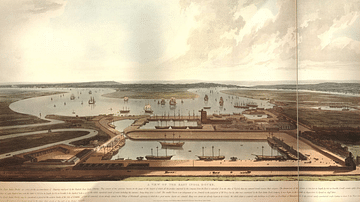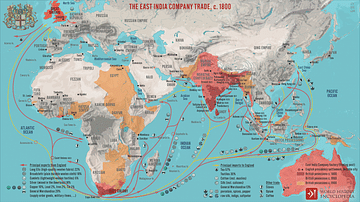Server Costs Fundraiser 2024
Review

| Rating: | |
|---|---|
| Title: | The Anarchy |
| Author: | William Dalrymple |
| Audience: | General Public |
| Difficulty: | Easy |
| Publisher: | Bloomsbury Publishing |
| Published: | 2022 |
| Pages: | 576 |
William Dalrymple’s "The Anarchy" is a riveting story of how the East India Company (EIC), a trading firm with a humble beginning in a small London office, dethroned the mighty Mughal Empire and became the ruler of a country of more than thirteen times the size of Britain. It tells the story in an engaging and vivid manner employing a wide body of primary and secondary research. This work should be of interest to both students and scholars of history.
According to Dalrymple, corporate greed drove EIC’s ambitions in India. With little accountability, company officials such as Robert Clive accumulated enormous wealth through graft, extortion, plunder, and other means. Meanwhile, EIC's ill-fated policies contributed to the Great Famine in Bengal (1770), costing millions of lives in what until recently was the second-richest economy in the world.
Dalrymple calls EIC’s story “the supreme act of corporate violence.” He argues that EIC’s raid was aided by the British structures of power. The Royal Charter that gave EIC the monopoly to trade in the East Indies also authorized it to “wage war,” raise an army, and rule territories. The British Parliament – several of whose members were investors in EIC – also backed the company with “state power” in its military build-up. When the EIC faced bankruptcy only seven years into acquiring the Diwani of Bengal (1775), it was the British government that came to its rescue with a massive bailout.
The Introduction sets the stage in seeking to answer why and how a single business entity managed to be masters of a subcontinent. In the Epilogue, Dalrymple concludes that the story of EIC’s corporate greed should serve as a cautionary note for today’s corporate giants with global ambitions. The author’s concerns also remind us of corporate predatory behaviors in recent decades and how they have already led to political turmoil and upheaval in countries such as Iran (Anglo-Persian Oil Company), Chile (ITT), and Guatemala (United Fruit).
The main body of the book traces the rise of EIC, employing the company’s own correspondence and materials. It also taps into primary Indian and Persian sources in focusing on powerplays among regional players such as the Marathas, the Nizam of Hyderabad, and the Sultans of Mysore. Dalrymple persuasively shows how EIC’s success was facilitated by a multitude of factors: the discord among regional powers, easy access to credit from mega Indian bankers like Jagat Seths, the betrayal of the Nawab of Bengal by his own general, the company’s own policy of divide and rule, and the lack of a coherent strategy by the French – EIC’s main European rival in India.
A "Who’s Who" at the beginning of the book is very useful in staying on track with the movers and shakers in the story. Also, maps and scores of illustrations help to place faces to names.
While the author’s research methodology is exemplary, his extensive use of quotations could have been supplemented with his own critical analysis and interpretation. He also heavily relies on the accounts of the Mughal historian Ghulam Hussain, who could have been compared with other sources to provide a more balanced perspective. At times, the author’s description of bloodshed in gruesome detail seems sensational and unnecessary. Finally, history disputes Dalrymple’s claim that corporate violence originated with EIC. Way before EIC had a foothold in India, in 1621, the Dutch East India Company had led a violent campaign against the nutmeg-rich Banda Islands resulting in the extermination of nearly their entire population.
William Dalrymple is a Delhi-based Scottish historian. His books have won multiple awards, and The Anarchy was longlisted for the 2019 Baillie Gifford Prize for Non-Fiction. The Anarchy is an ambitious work that builds upon the author’s previous works on the waning Mughal period: White Mughals (2002) and The Last Mughal (2006). His account of EIC has the hallmarks of high-quality original research. The author provides many intriguing leads for scholars of South Asian history to focus on and come up with fresh insights into a tumultuous and complex period of Indian history.
About the Reviewer
Cite This Work
APA Style
Chaudhuri, S. (2023, June 06). The Anarchy: The Relentless Rise of the East India Company. World History Encyclopedia. Retrieved from https://www.worldhistory.org/review/366/the-anarchy-the-relentless-rise-of-the-east-india/
Chicago Style
Chaudhuri, Shankar. "The Anarchy: The Relentless Rise of the East India Company." World History Encyclopedia. Last modified June 06, 2023. https://www.worldhistory.org/review/366/the-anarchy-the-relentless-rise-of-the-east-india/.
MLA Style
Chaudhuri, Shankar. "The Anarchy: The Relentless Rise of the East India Company." World History Encyclopedia. World History Encyclopedia, 06 Jun 2023. Web. 26 Jul 2024.




